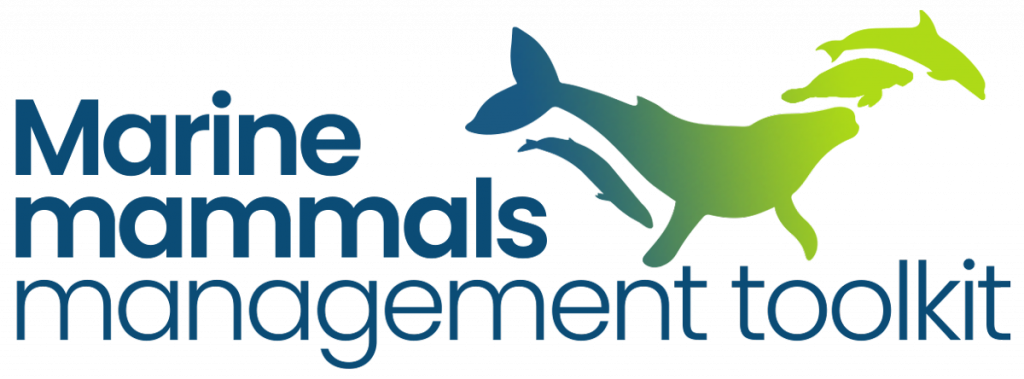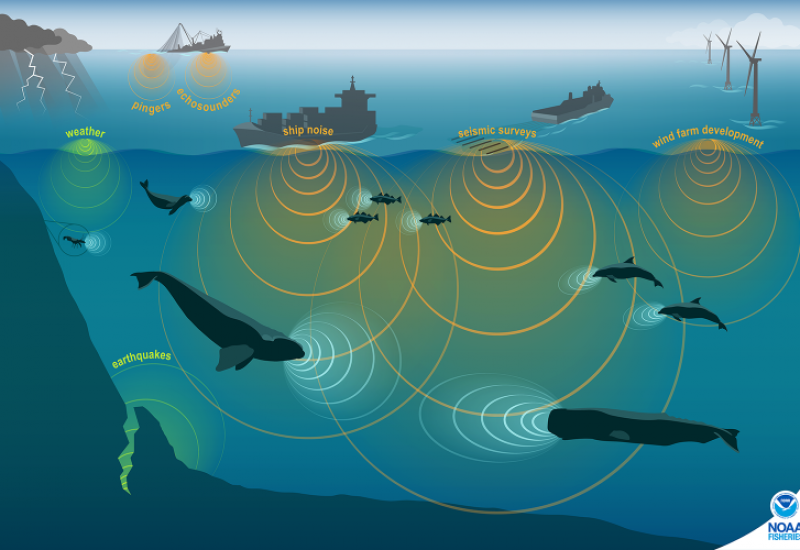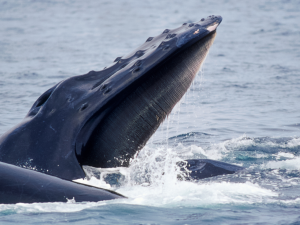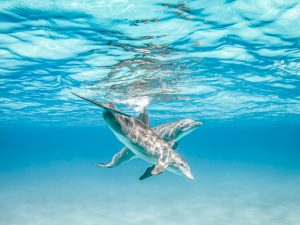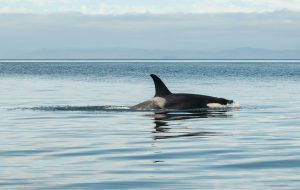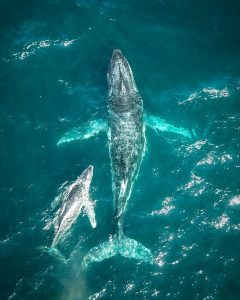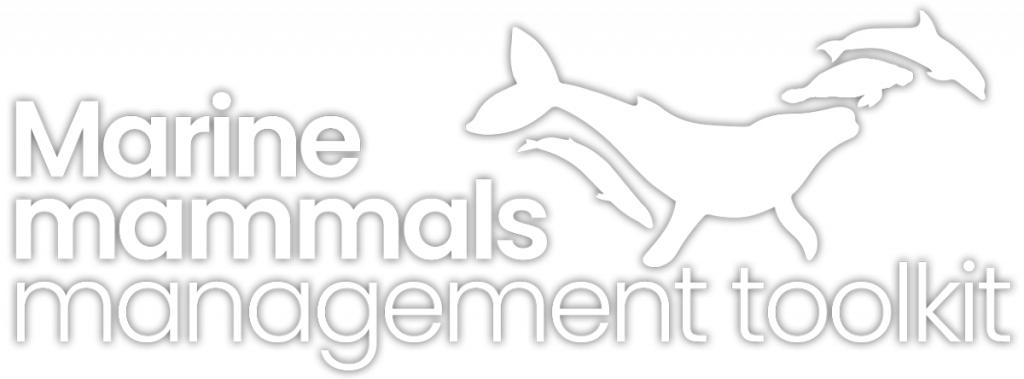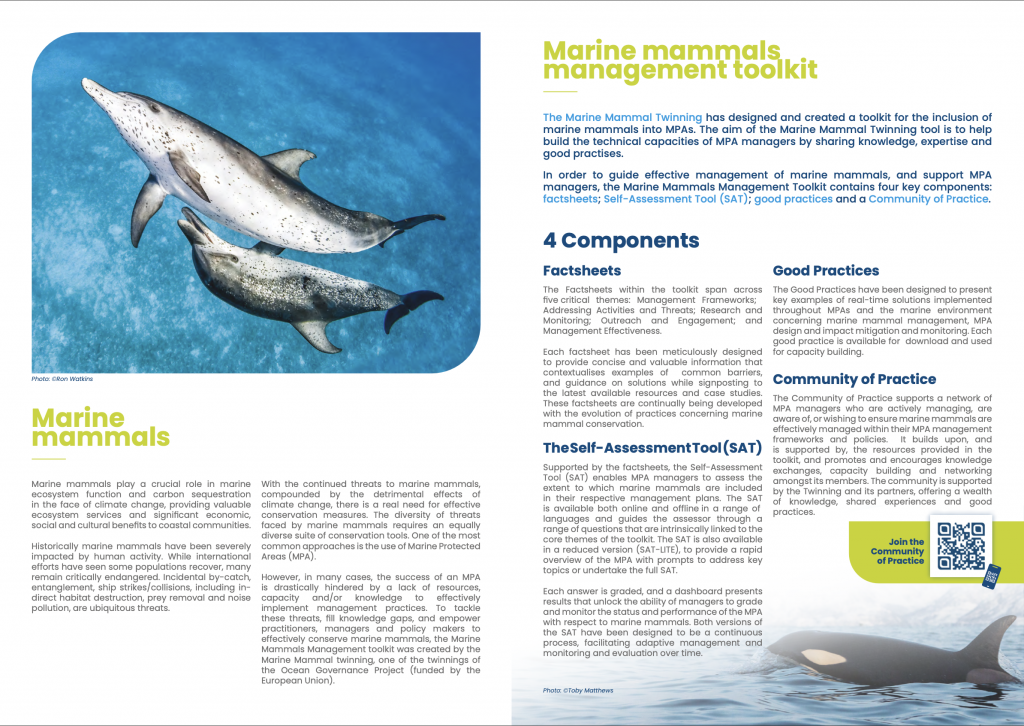On World Oceans Day, the Convention on the Conservation of Migratory Species of Wild Animals (CMS) released a landmark report aimed at addressing a major threat to marine species: noise pollution.
Noise pollution is known to cause significant disturbance to marine wildlife, including migratory species protected under CMS such as whales and dolphins (and their prey). Such impacts can result in adverse changes to entire marine ecosystems.
Animals exposed to elevated or prolonged anthropogenic noise can suffer direct injury and temporary or permanent auditory threshold shifts, compromising their communication and ability to detect threats and find food, sometimes leading to death. Anthropogenic noise can displace wild animals from critical habitats, including from their migration routes, and mask important natural sounds, such as the call of a mate.
The report focuses on three major sources of noise pollution: shipping, seismic airgun surveys (used in oil and gas exploration) and pile driving (used for offshore wind farms and other marine infrastructure). It provides, for the first time, practical guidance on the Best Available Technology (BAT) and Best Environmental Practice (BEP) to reduce noise from these activities.
Solutions to mitigate three important sources of noise pollution: shipping, seismic airgun surveys and pile driving
The report highlights the application of quieting technologies that reduce sound at the source as the most effective way to reduce the negative impacts of underwater noise on marine wildlife. These quieting methods and practices may also have additional benefits, such as reducing greenhouse gas emissions and contributing to the mitigation of climate change – another major threat to marine wildlife.
1. For the shipping industry, the application of BAT and BEP includes alterations in ship design and propeller technology, and improving operating conditions. Reducing the speed of container and cargo ships, known as slow steaming, not only lowers the acoustic footprint but also reduces fuel consumption and CO2 emissions. Ships typically burn less fuel at lower speeds, which also helps to reduce costs for ship operators. Quieting the noisiest 10-15% of ships would be particularly effective as they contribute disproportionately to overall shipping noise
2. As an alternative to Seismic airgun surveys, which pose significant threats to marine life (primarily due to the loud, intense noises produced by airguns), the report highlights the need for quieter alternatives like Marine Vibroseis, a technology designed to produce controlled, lower-frequency seismic signals. This could be much more effective as well as environmentally friendly. It also outlines rigorous mitigation measures that should be adopted if these alternatives cannot be employed.
3. As for pile driving, numerous quieting technologies and noise abatement systems are now available, many of which have been developed in recent years due to action-forcing standards and noise limits set by regulators such as the German government.
Despite the application of best available quieting technologies, certain activities may still have an impact on marine life, and therefore further mitigation measures are often necessary. These could include avoiding areas or particular times of the year that are critical for wildlife, performing detailed environmental assessments before conducting surveys, effective regulation, strong enforcement, robust monitoring and research to improve our understanding of the impacts of underwater noise.
Noise pollution: a hidden threat that wreaks havoc on marine wildlife
From the smallest plankton to the largest whales, noise pollution disrupts the harmonious underwater symphony that marine species create and rely on for survival. Noise pollution is not only detrimental to the health and disruptive to the natural behaviour of marine species, but it can also impact their critical life processes such as reproduction and feeding.
While much of the research on the impact of marine noise focuses on cetaceans (whales, dolphins and porpoises), a wide range of other species including the polar bear, sirenians (the Dugong and manatees), pinnipeds (seals, sea lions and walrus), marine turtles, marine otters, fish, crustaceans and cephalopods are known to be affected by human-made noise.
With the intensification of human activities in the ocean, underwater noise pollution is escalating at an alarming rate. A study published in the Journal Science in 2021, showed that shipping has led to a 32-fold increase in low-frequency noise along major shipping routes in the past 50 years.
Unchecked noise pollution is not only a major threat for marine wildlife, but can also have grave implications for human livelihoods, notably through impacts on fisheries. Millions of people across the globe depend on oceans for their sustenance and economic survival. Failure to address this issue could have devastating effects on the marine food chain and, subsequently, on fisheries and human communities reliant on these resources.
Countries and industry have an important role to play in addressing noise pollution
A number of important decisions and resolutions passed by countries under international treaties – such as the Convention on the Conservation of Migratory Species of Wild Animals (CMS) and the Convention on Biological Diversity (CBD) – call for and encourage the use of the Best Available Techniques/Technologies (BAT) and Best Environmental Practice (BEP) compiled in this report.
To address the significant impacts of noise pollution on many migratory species protected under CMS (and their prey), CMS Parties outlined the necessary mitigation actions in Resolution 12.14 Adverse Impacts of Anthropogenic Noise on Cetaceans and Other Migratory Species.
Regional conventions like the Convention for the Protection of the Marine Environment of the North-East Atlantic (OSPAR Convention) and the Convention on the Protection of the Marine Environment of the Baltic Sea Area (Helsinki Convention) also advocate for the implementation of BAT and BEP – along with agreements targeting specific species like the Agreement on the Conservation of Cetaceans in the Black Sea, Mediterranean Sea and Contiguous Atlantic Area (ACCOBAMS) and the Agreement on the Conservation of Small Cetaceans of the Baltic, North East Atlantic, Irish and North Seas (ASCOBANS).
ACCOBAMS, ASCOBANS and CMS have also established the Joint Noise Working Group (JNWG) to support the Parties and scientific and advisory bodies of the three conservation treaties in implementing relevant policies and to ensure progress towards mitigating underwater noise. Following the JNWG’s consultations with industry experts on the technical feasibility of proposed mitigation measures and alternative technologies, a new Industry Advisory Group (IAG) was created, with experts from relevant industries such as the shipping sector, the oil and gas industry, shoreline developers, offshore extractors, and marine renewable energy companies.
Later this year, in October, CMS Parties will convene at the 14th meeting of the CMS Conference of the Parties, in Samarkand, Uzbekistan. This meeting will be the first global biodiversity gathering since the adoption of the Kunming-Montreal Global Biodiversity Framework, and will address many important conservation priorities, including action needed for more effective mitigation of marine noise.
Addressing marine noise is of global importance and provides an opportunity for countries to contribute to the new Global Biodiversity Framework and the UN Decade of Oceans Science for Sustainable Development.
